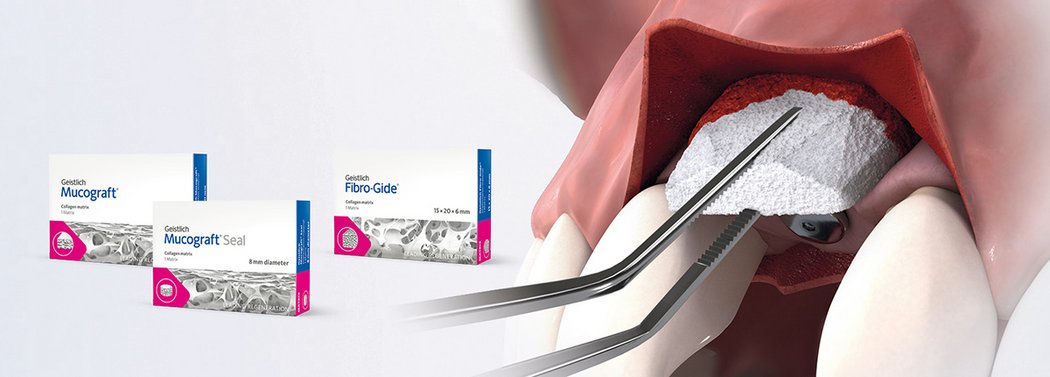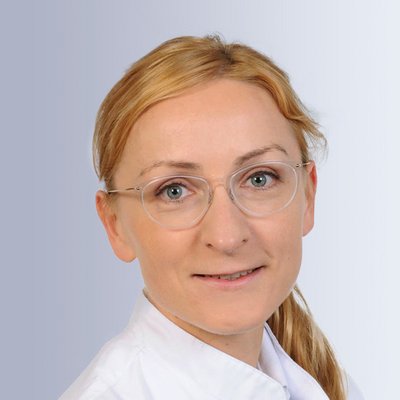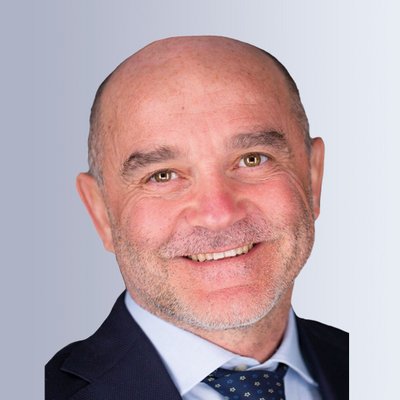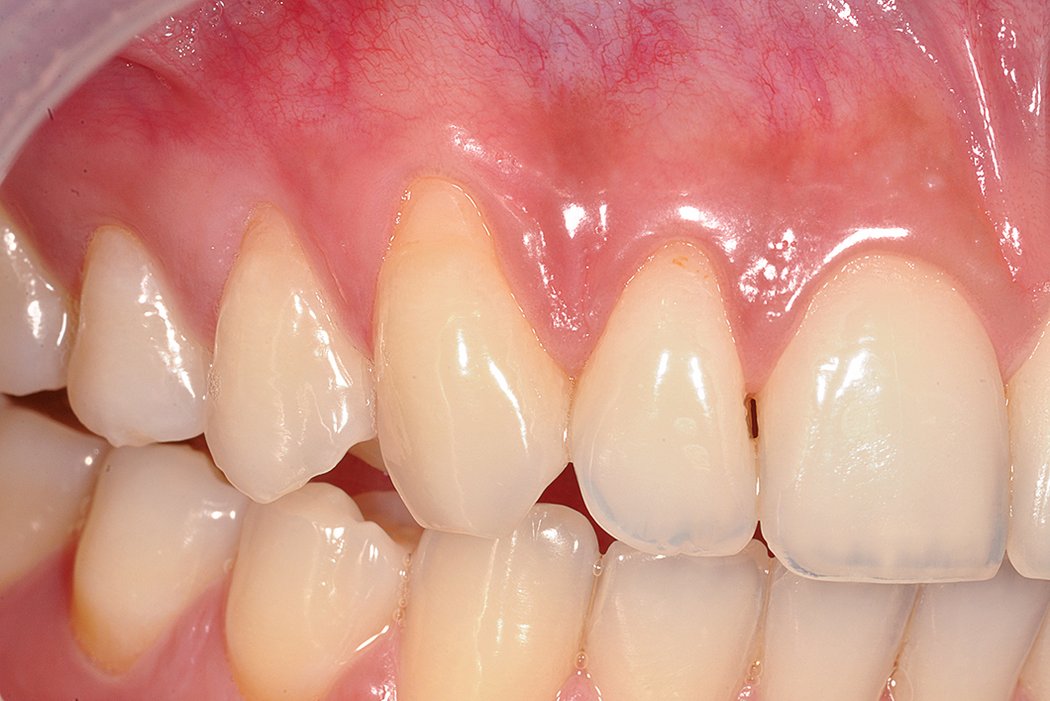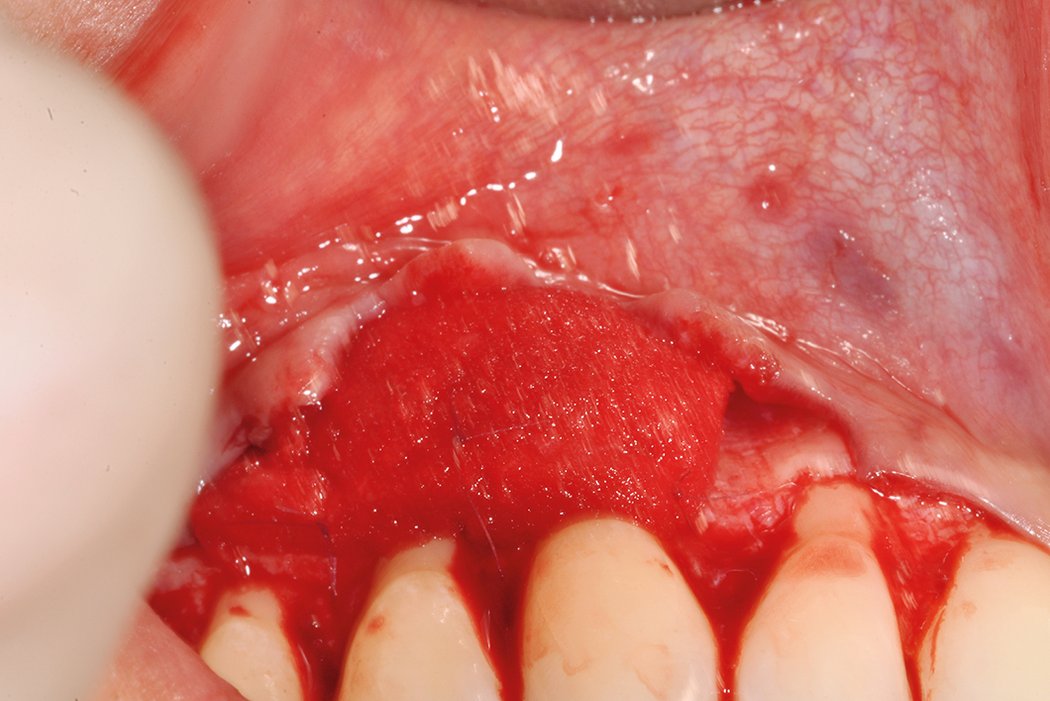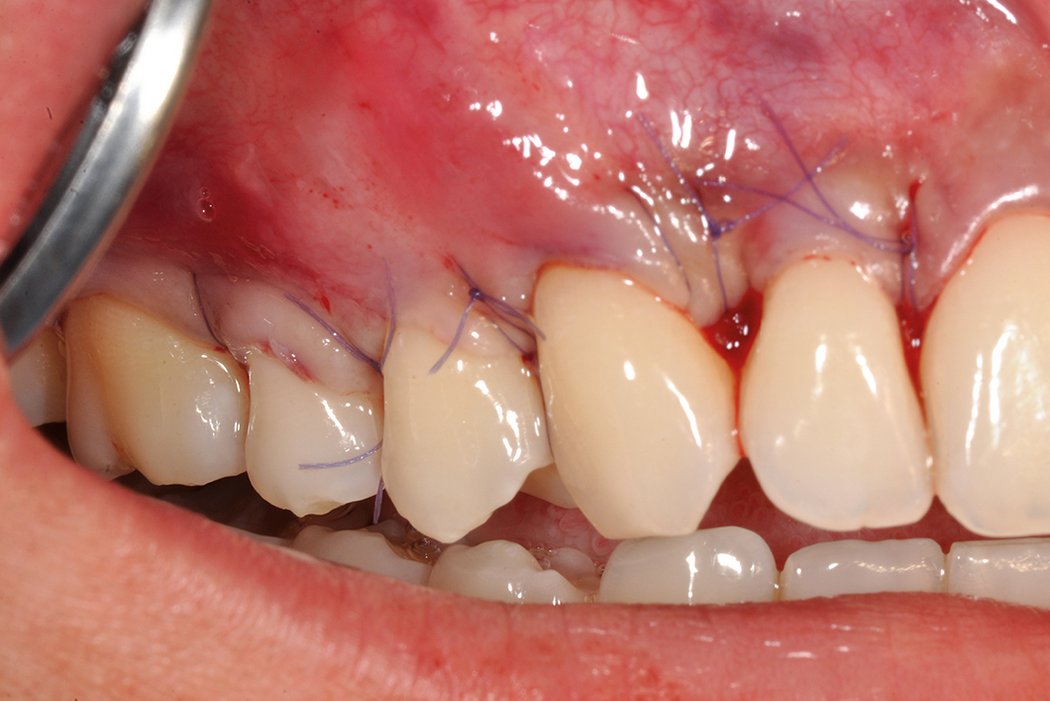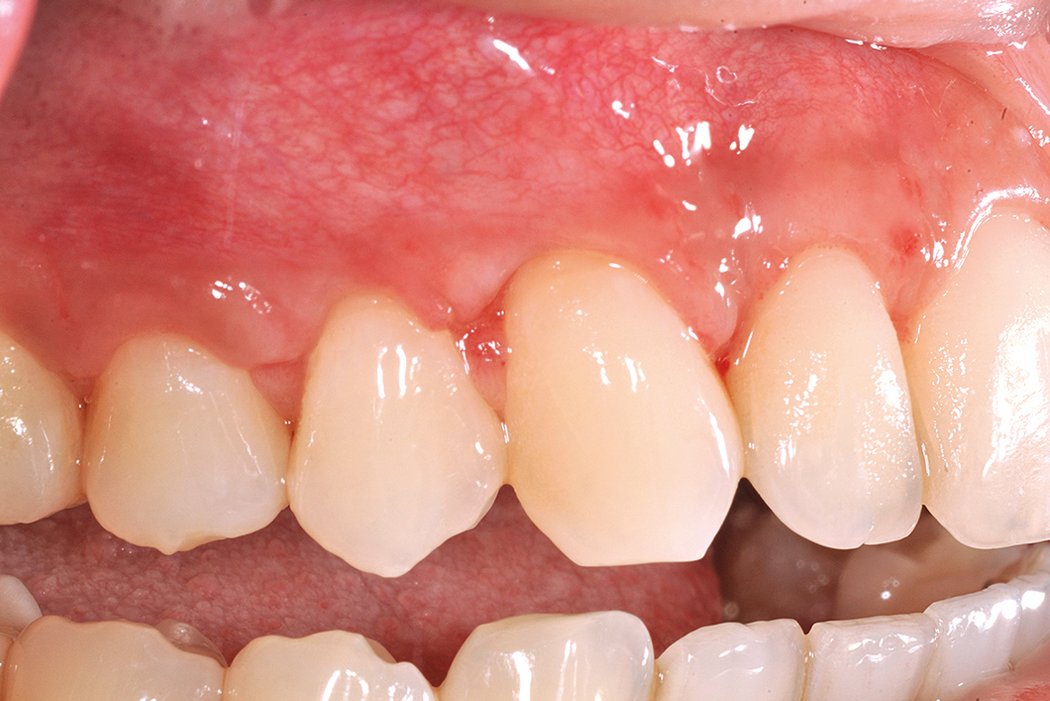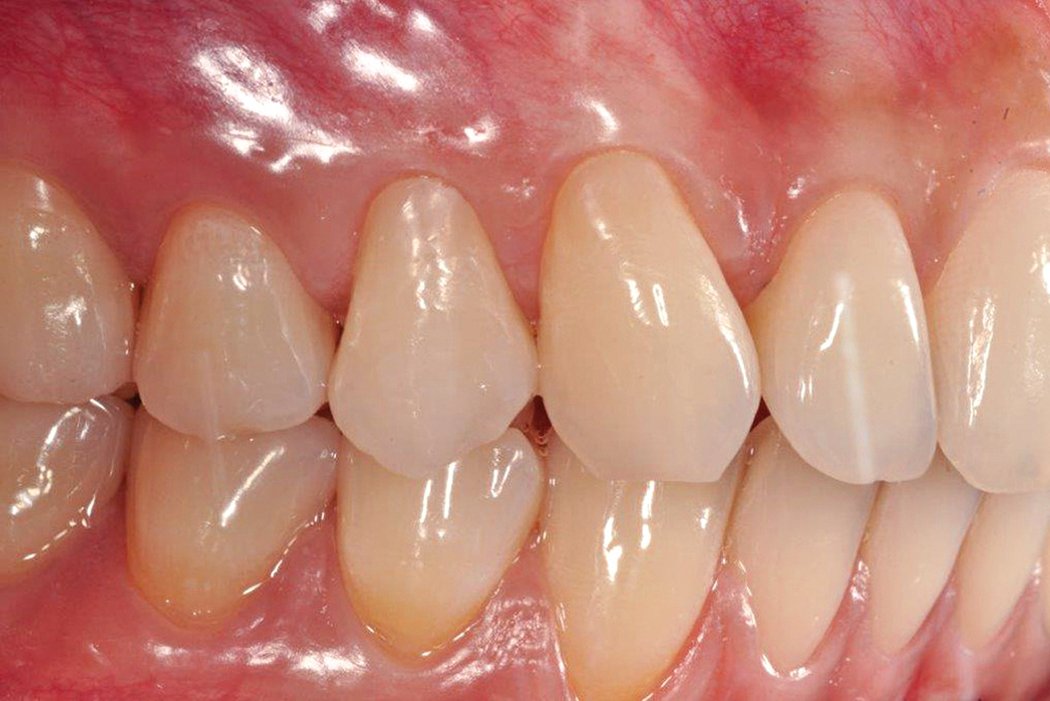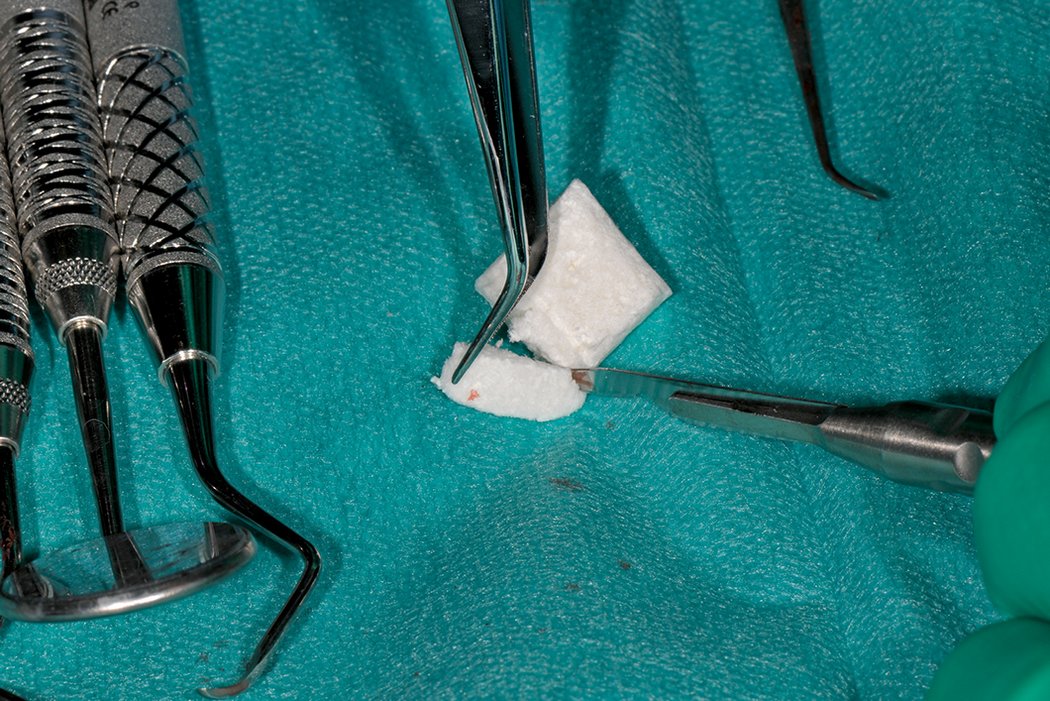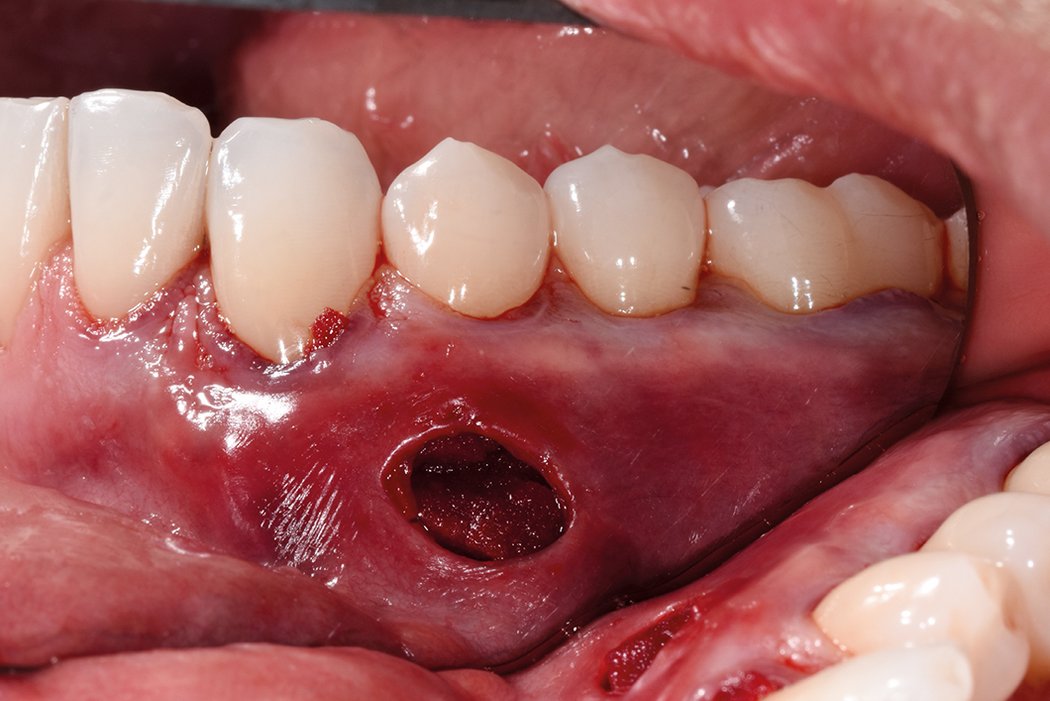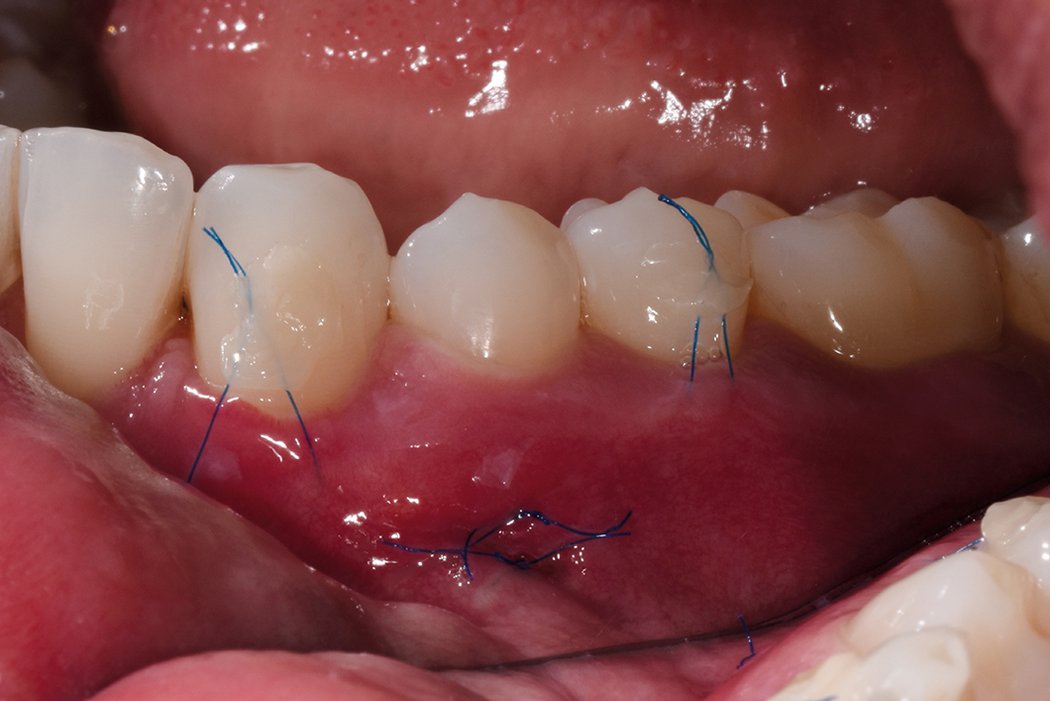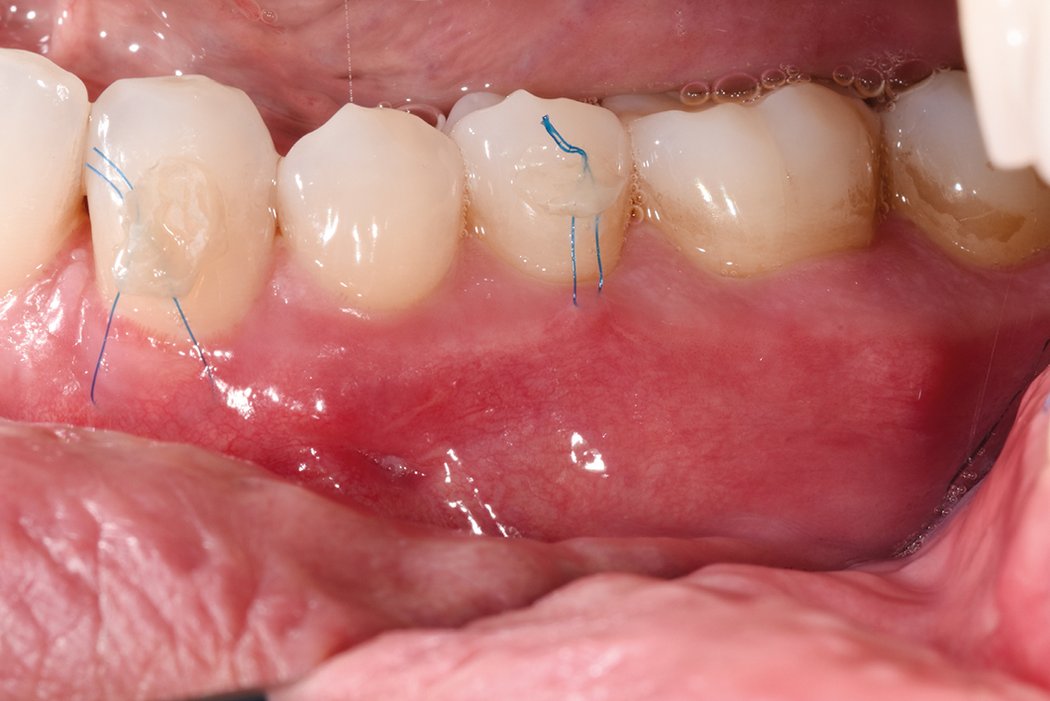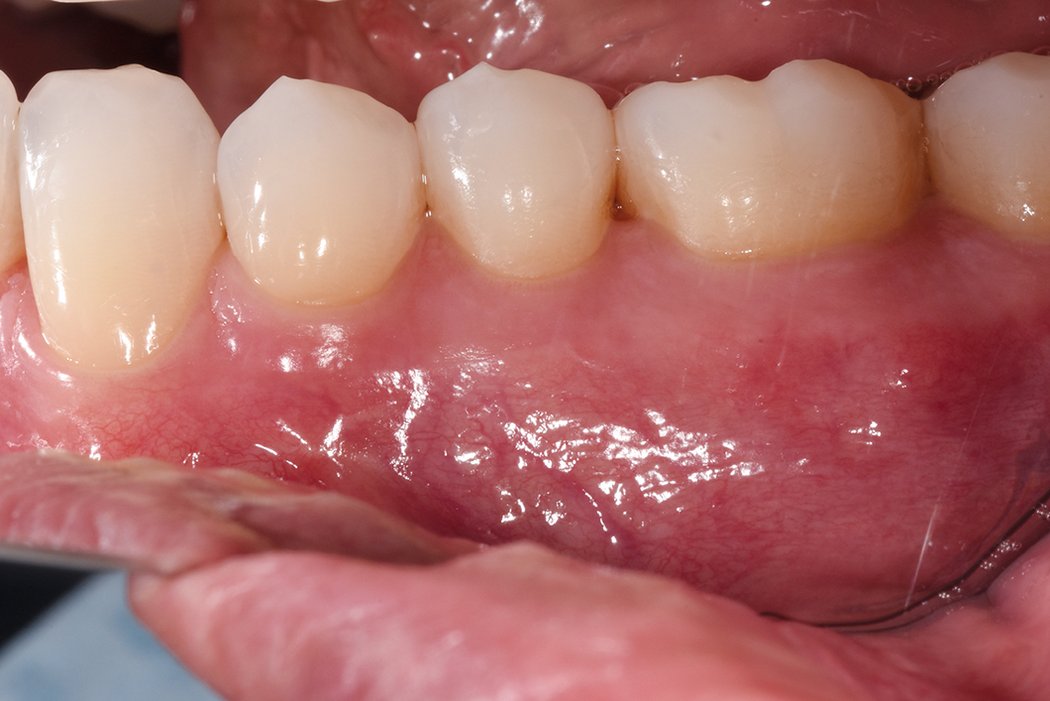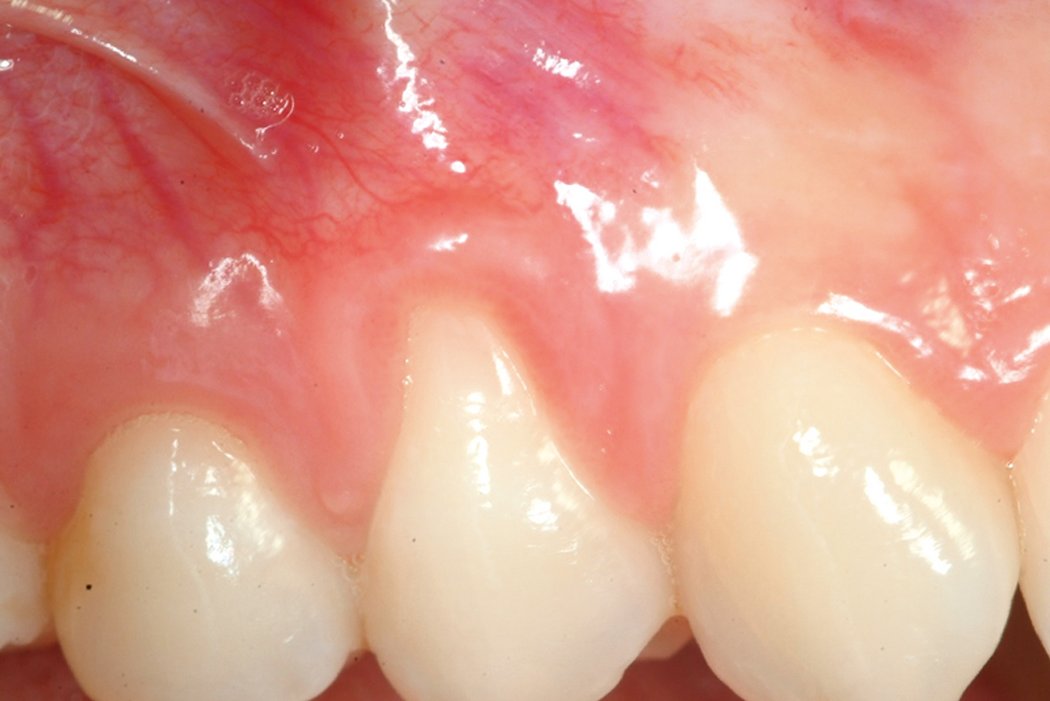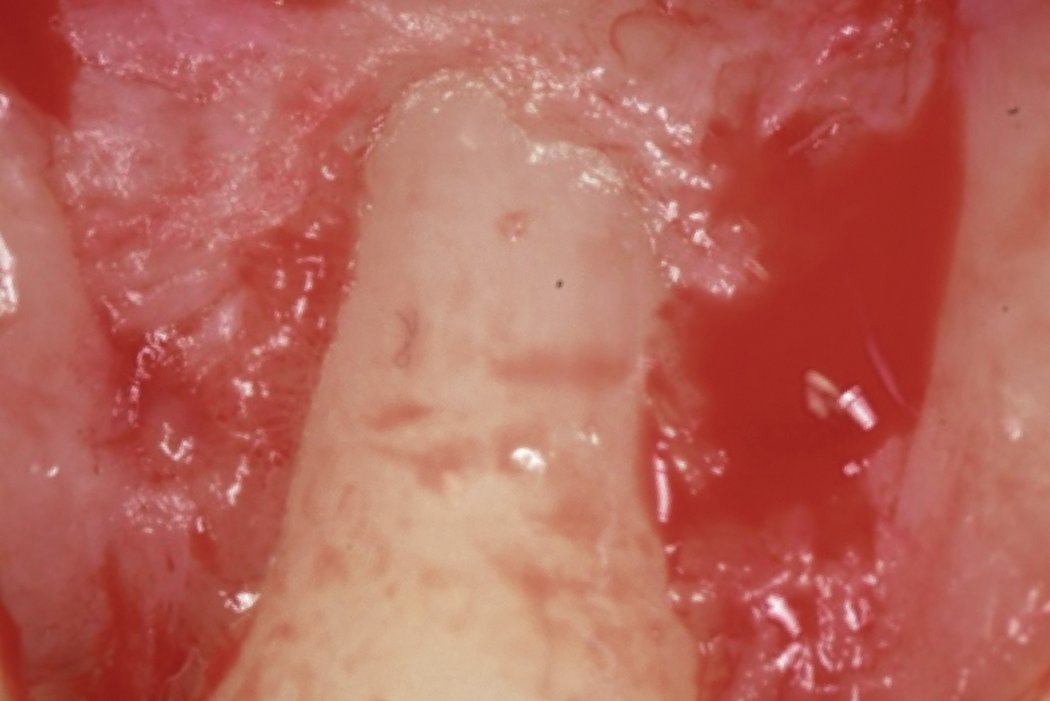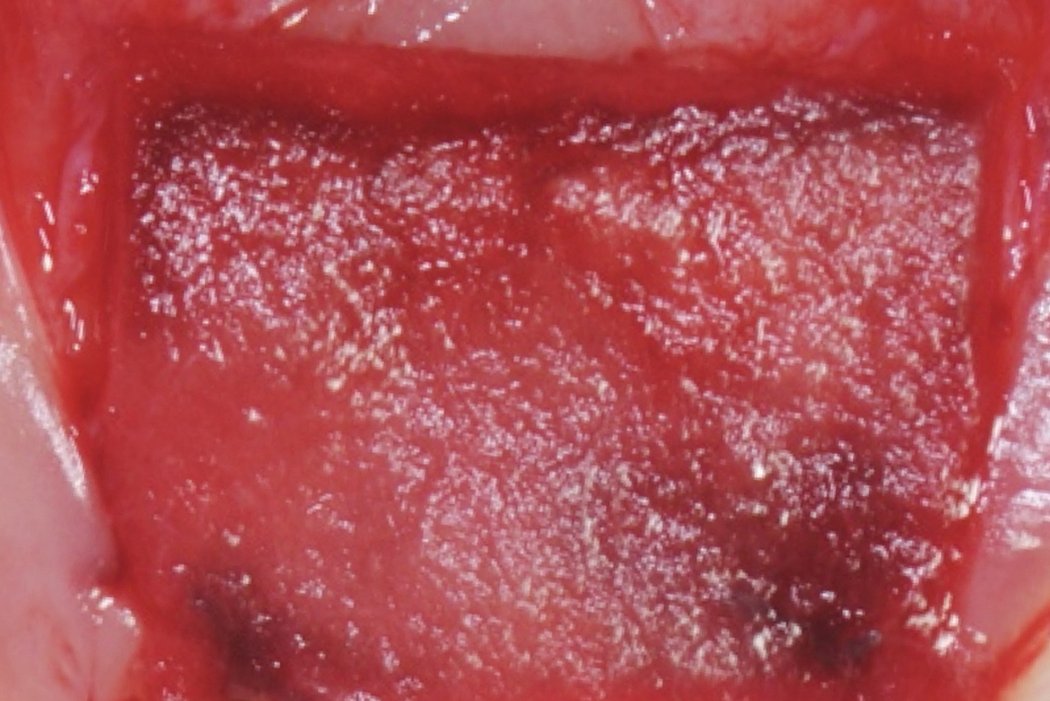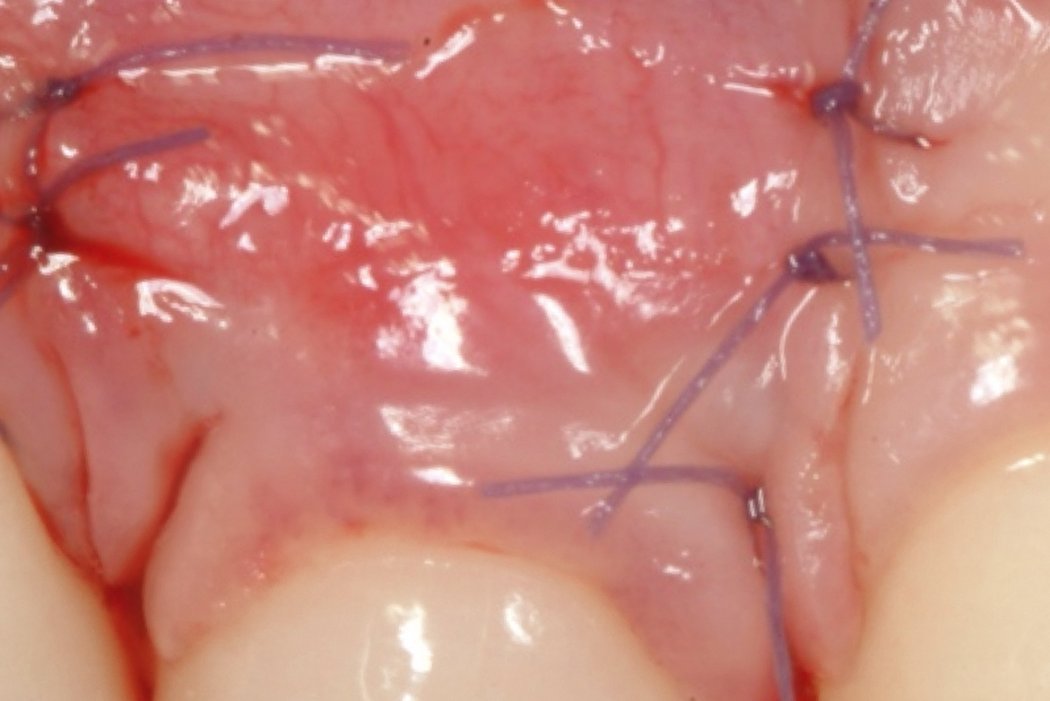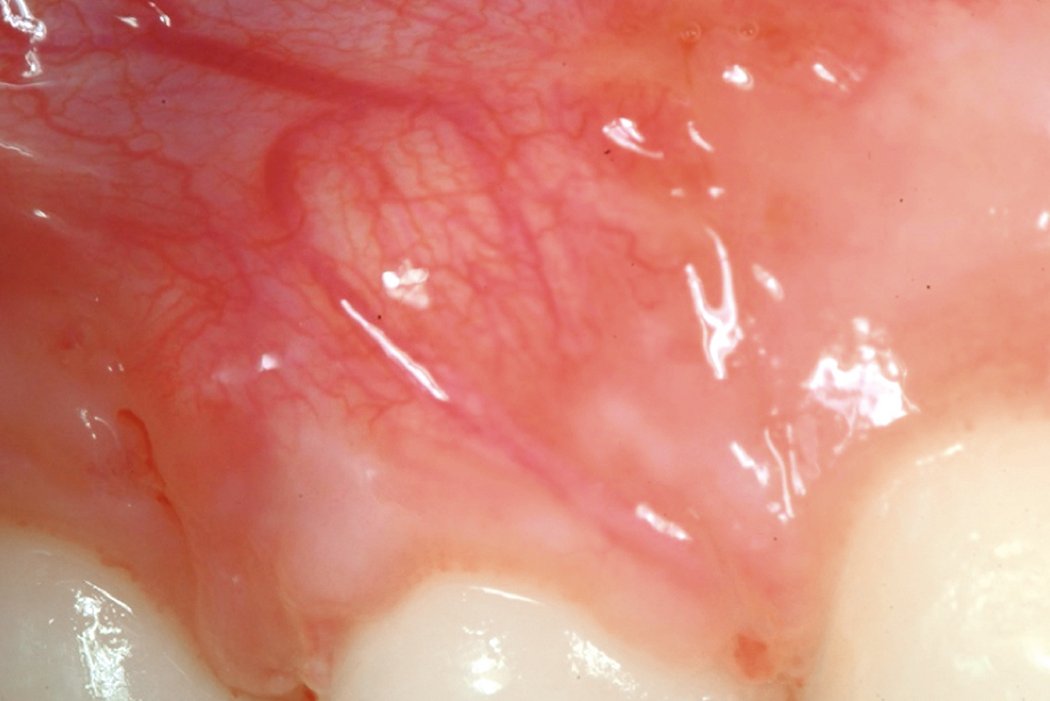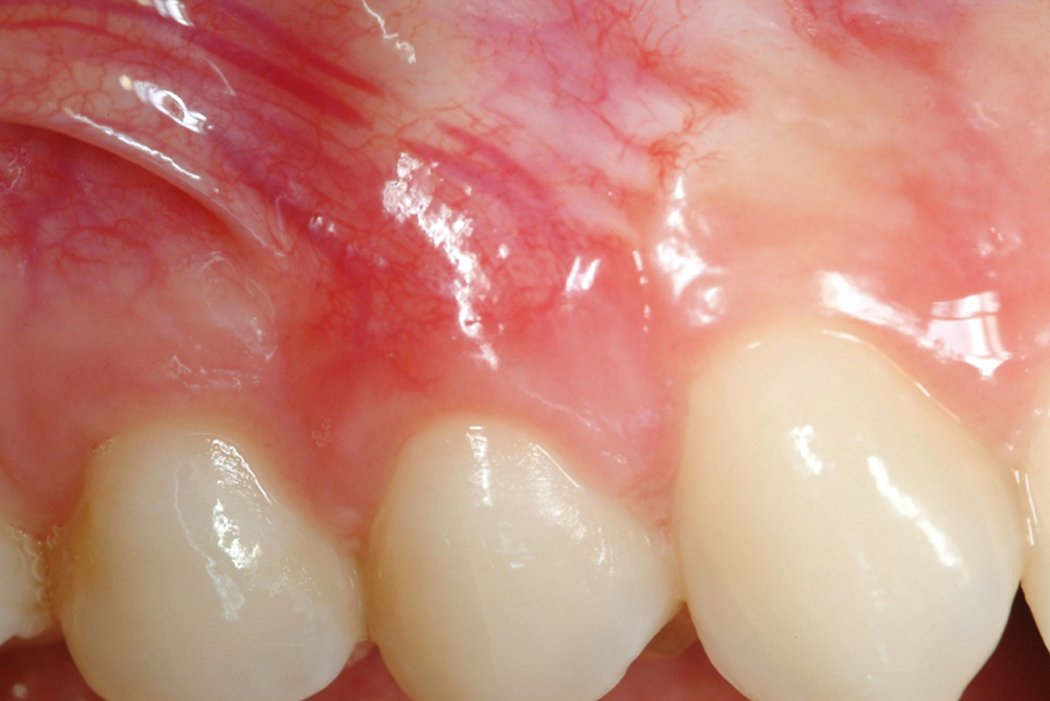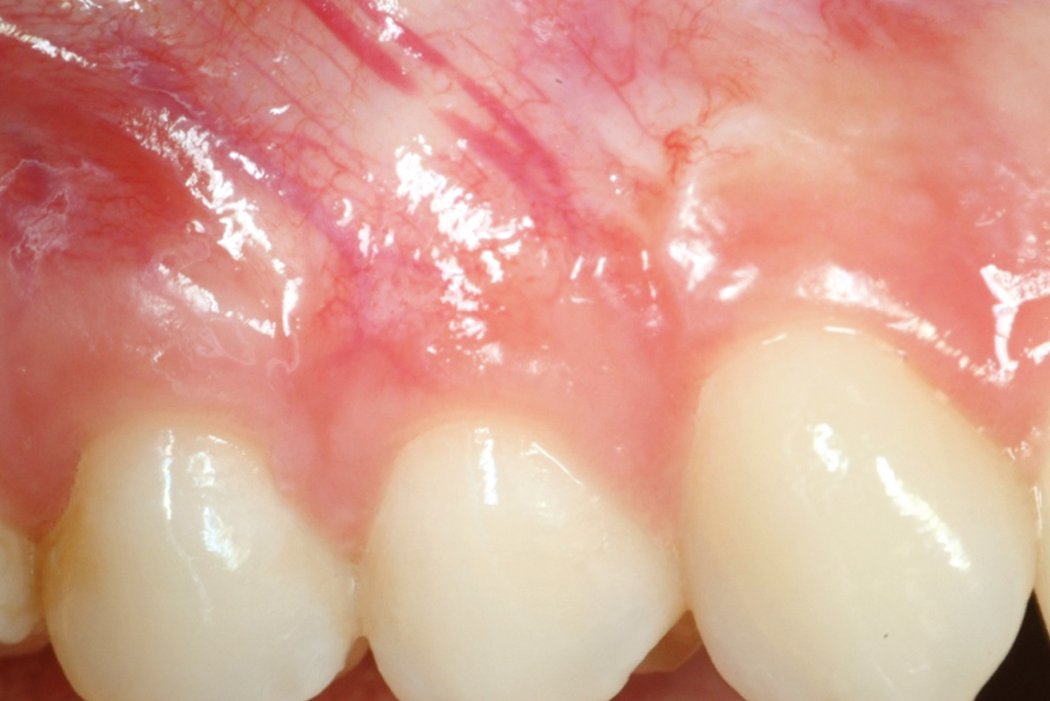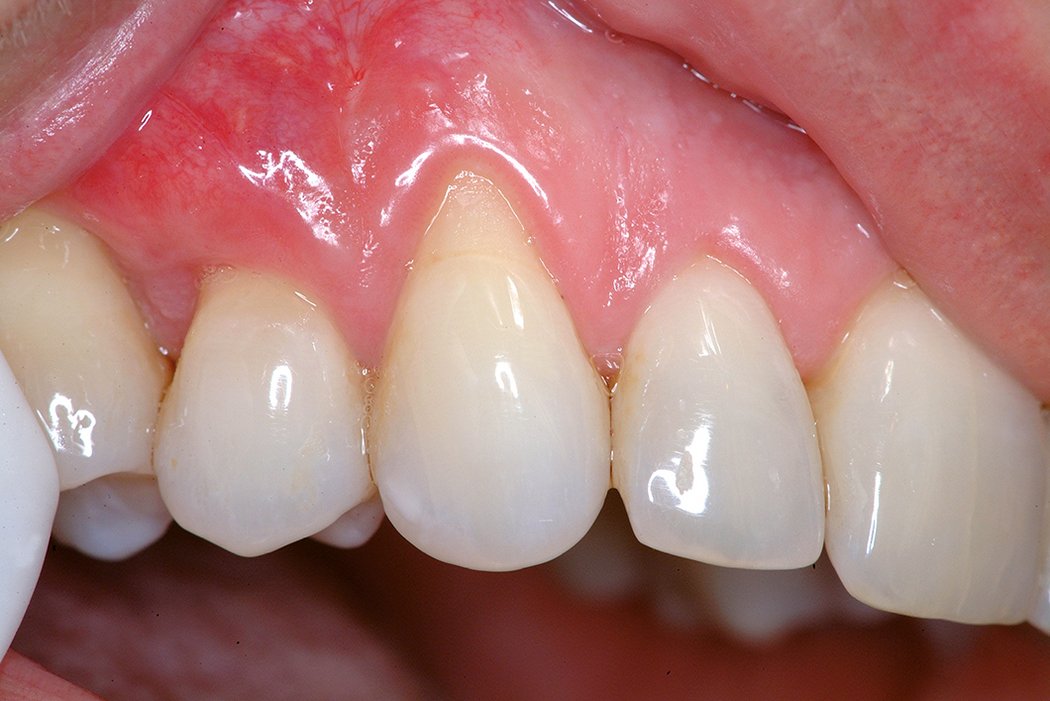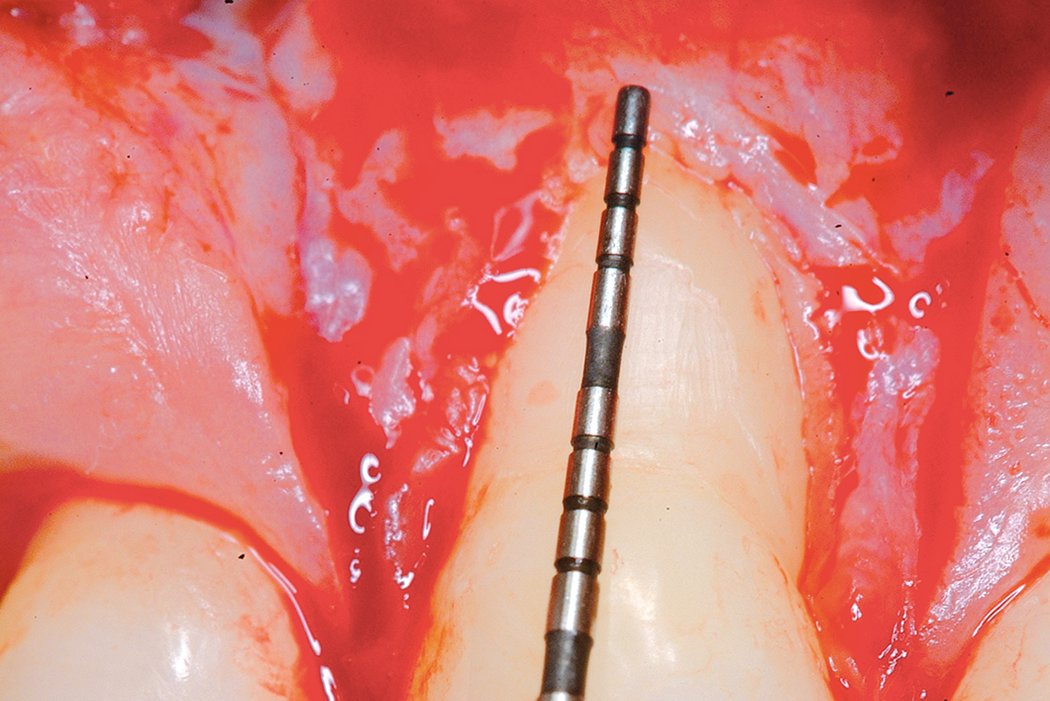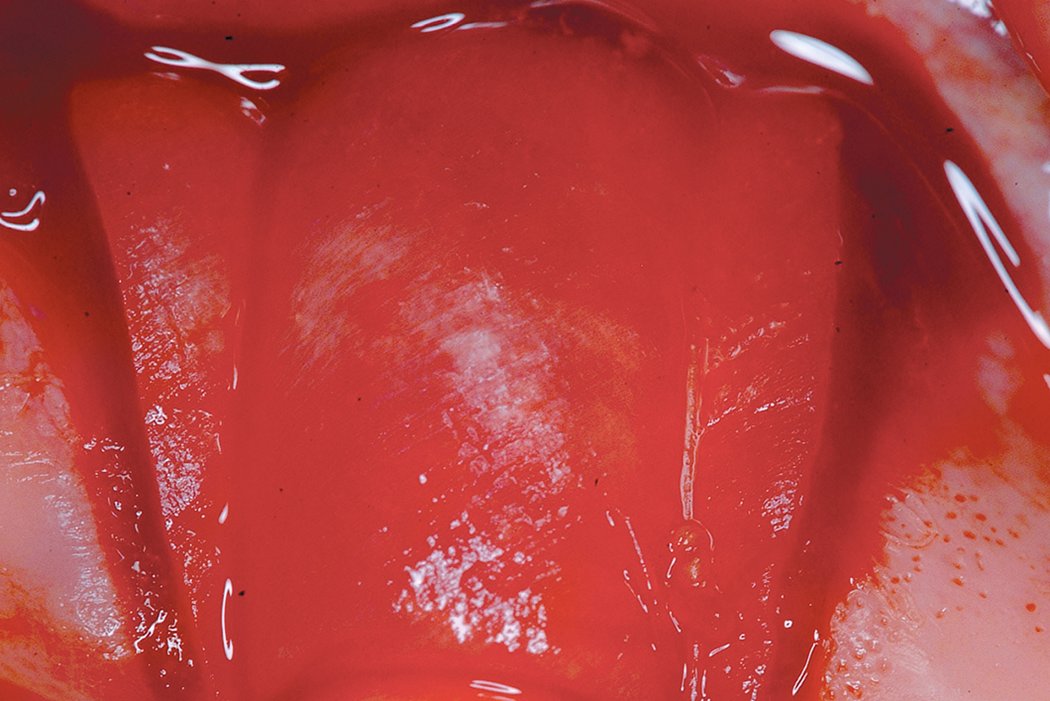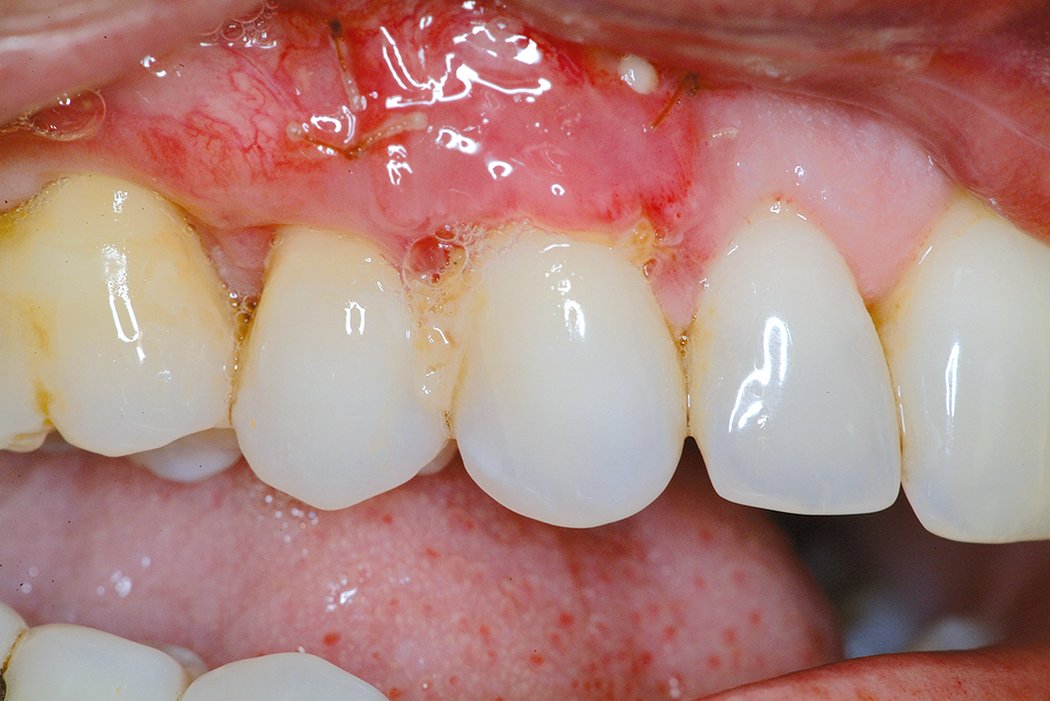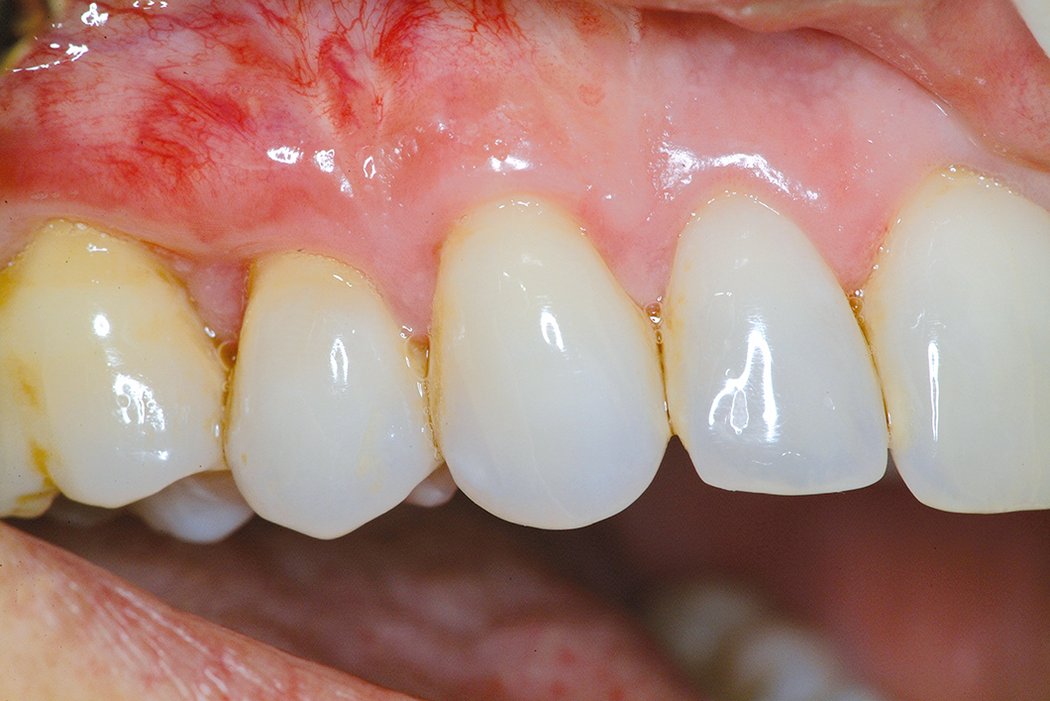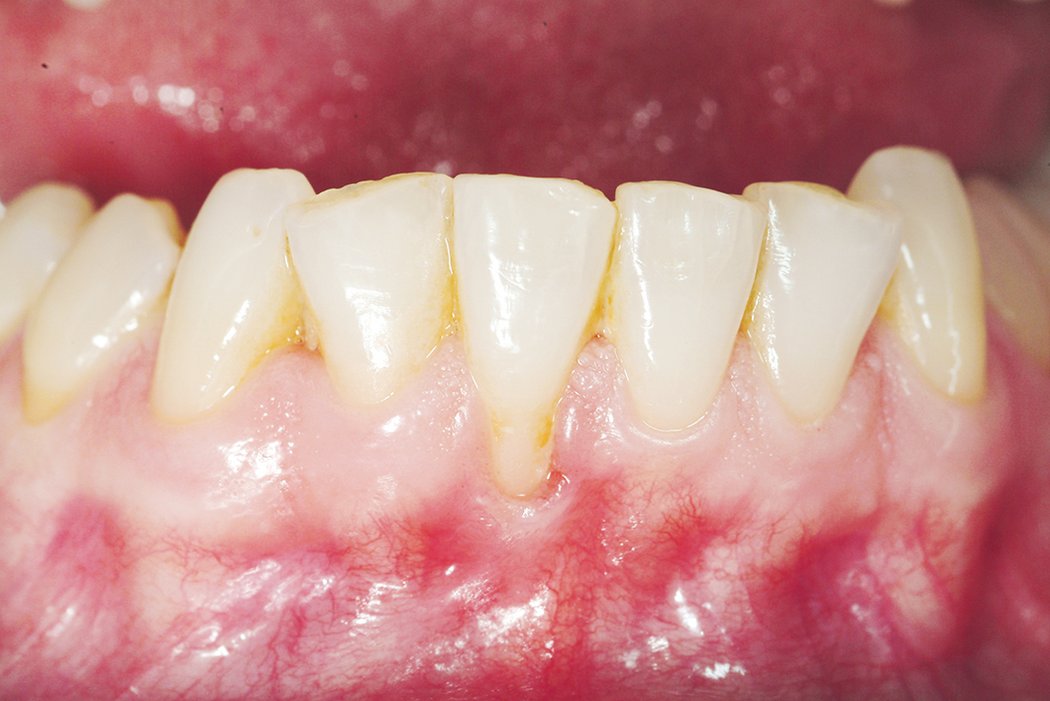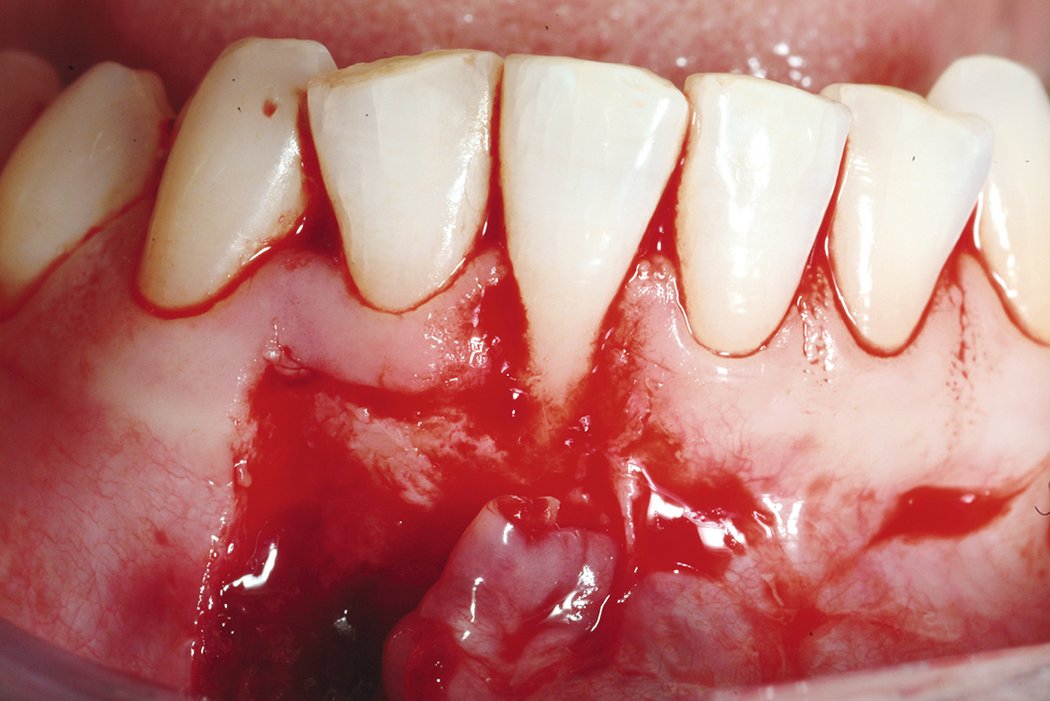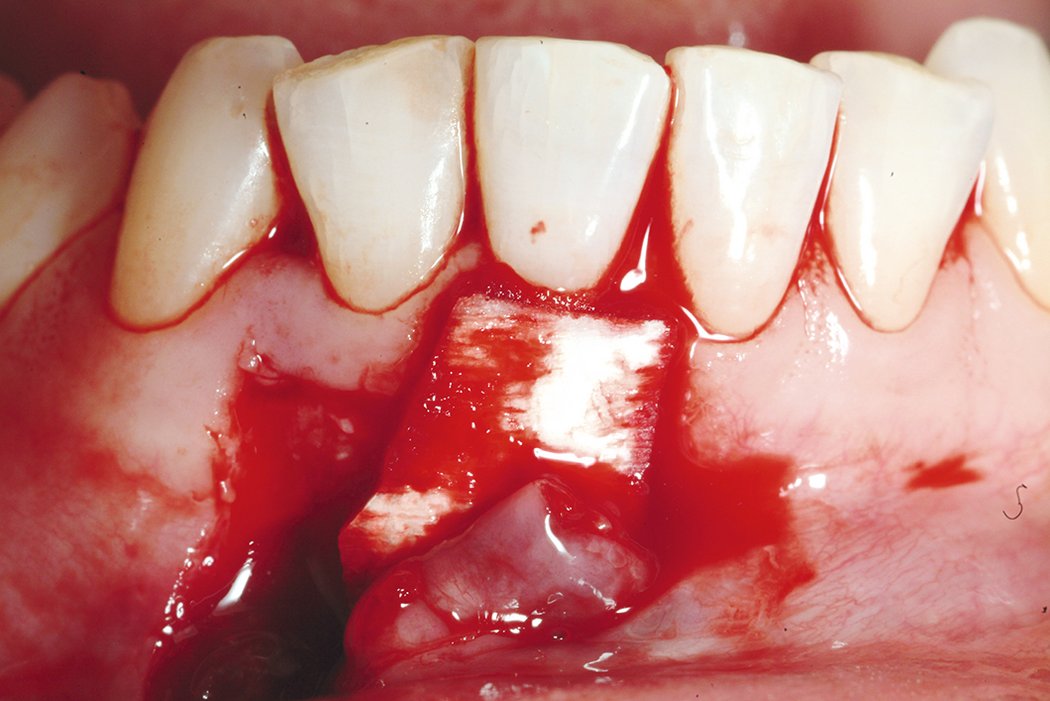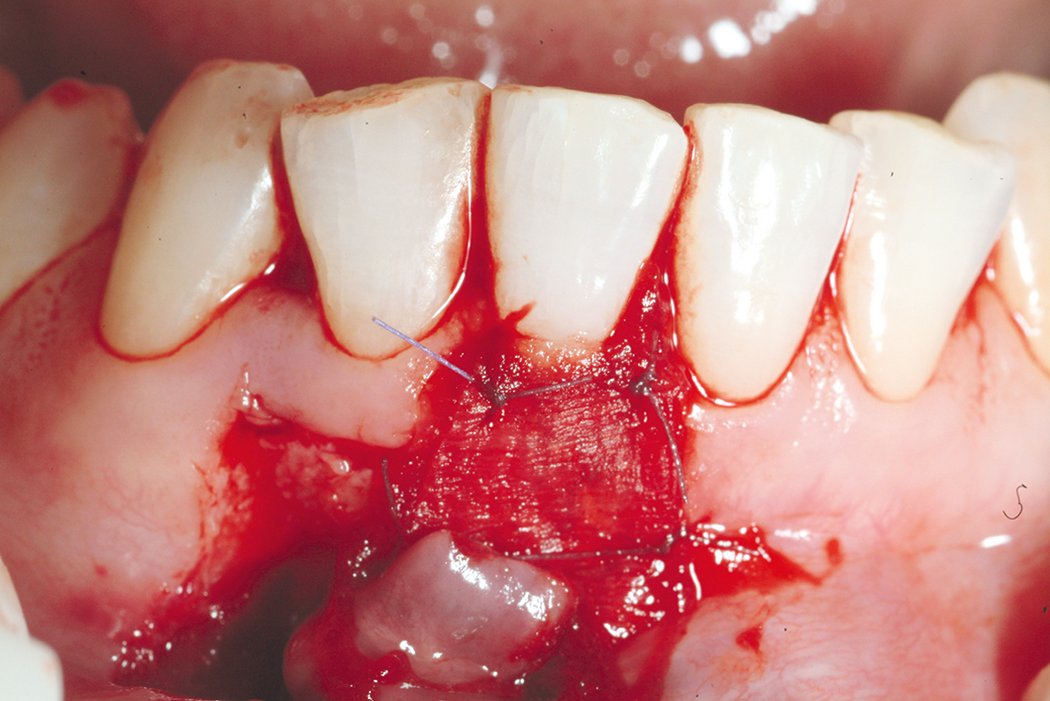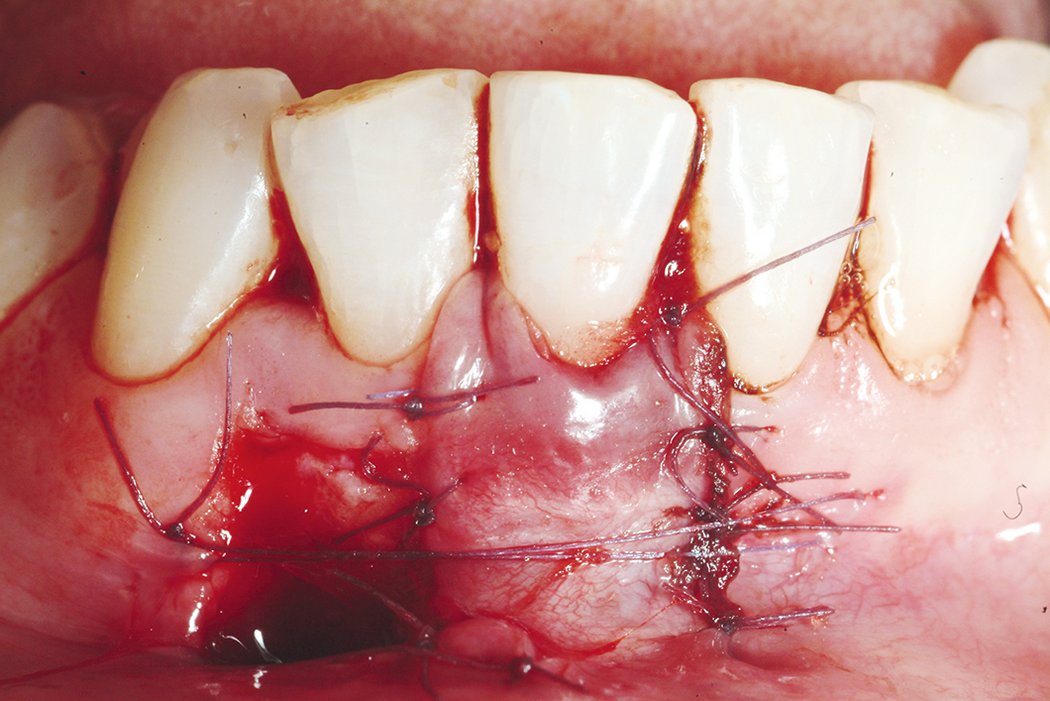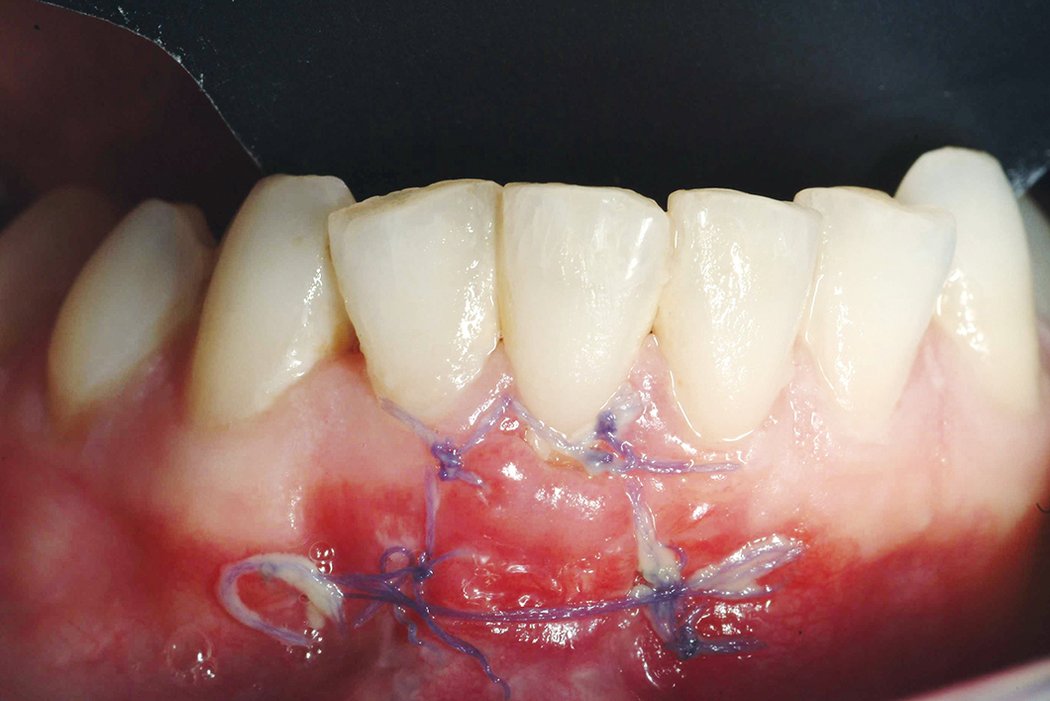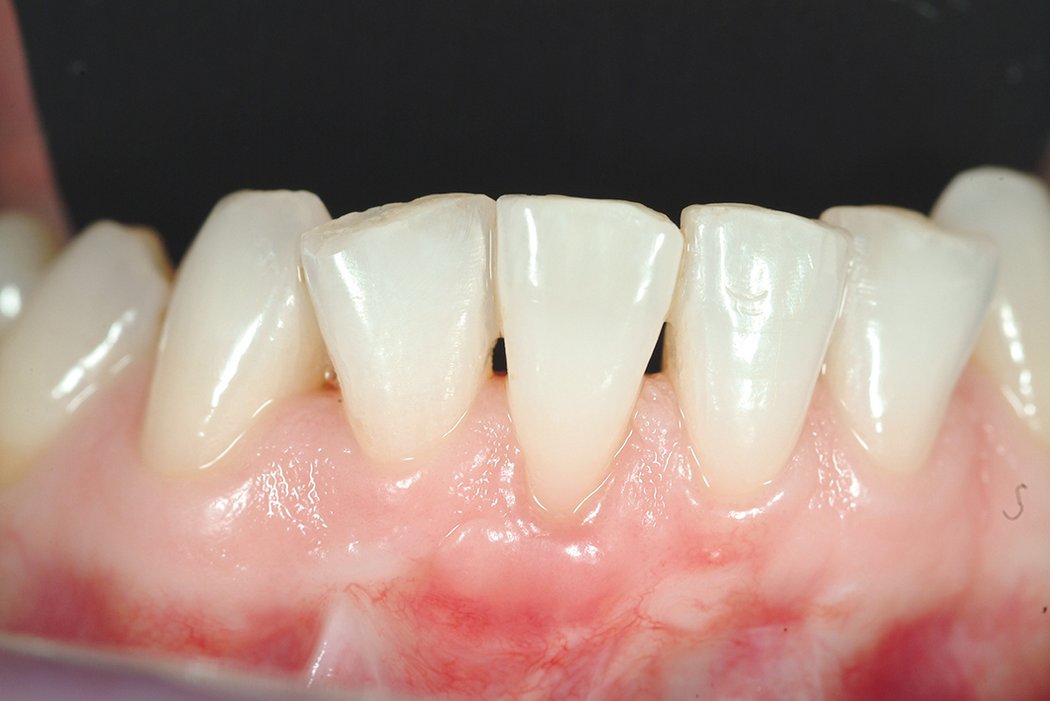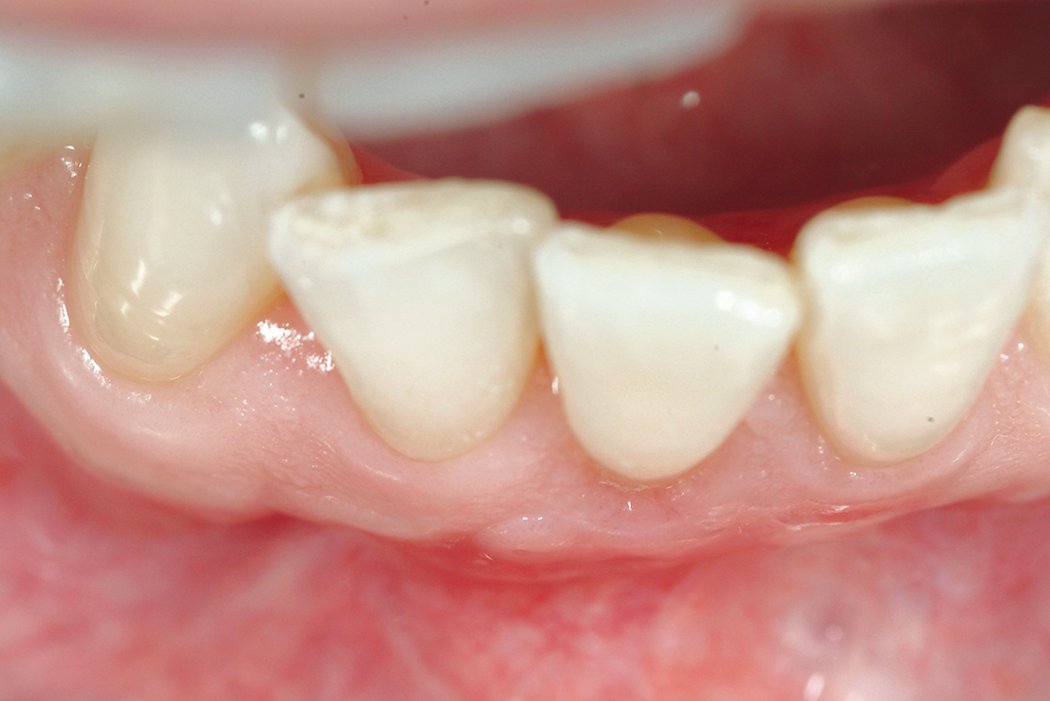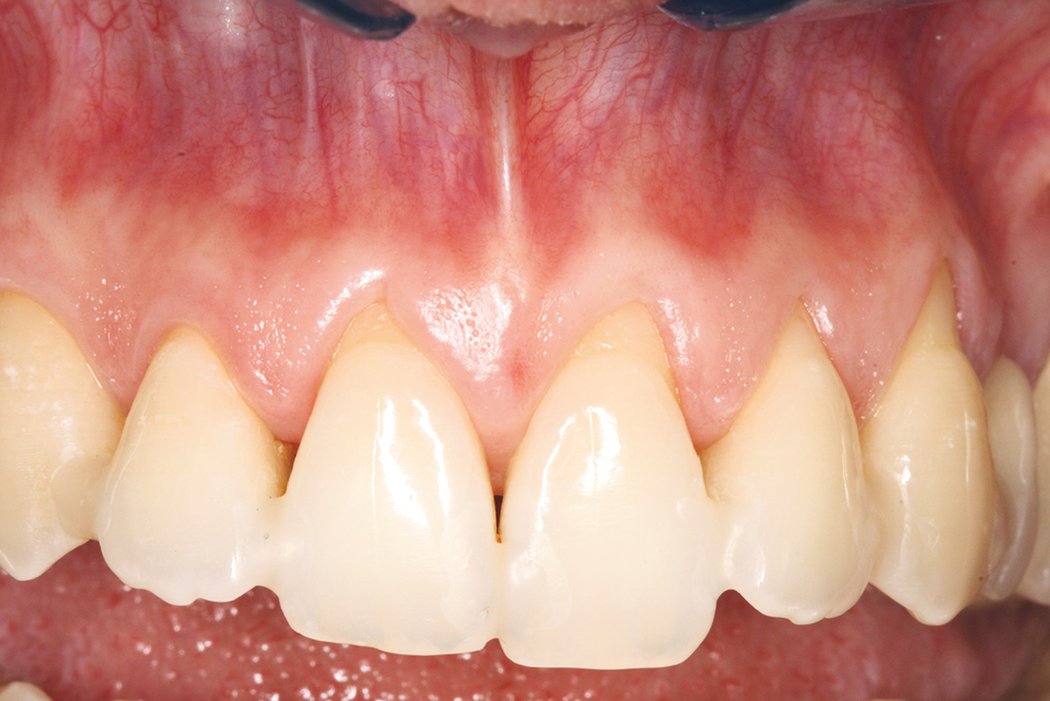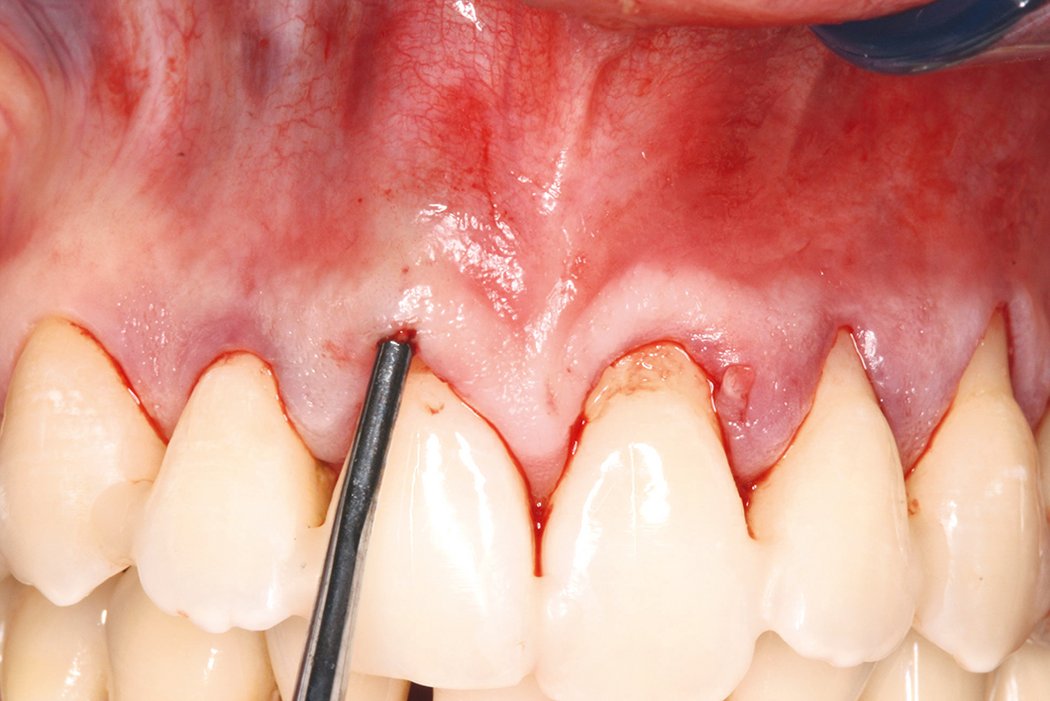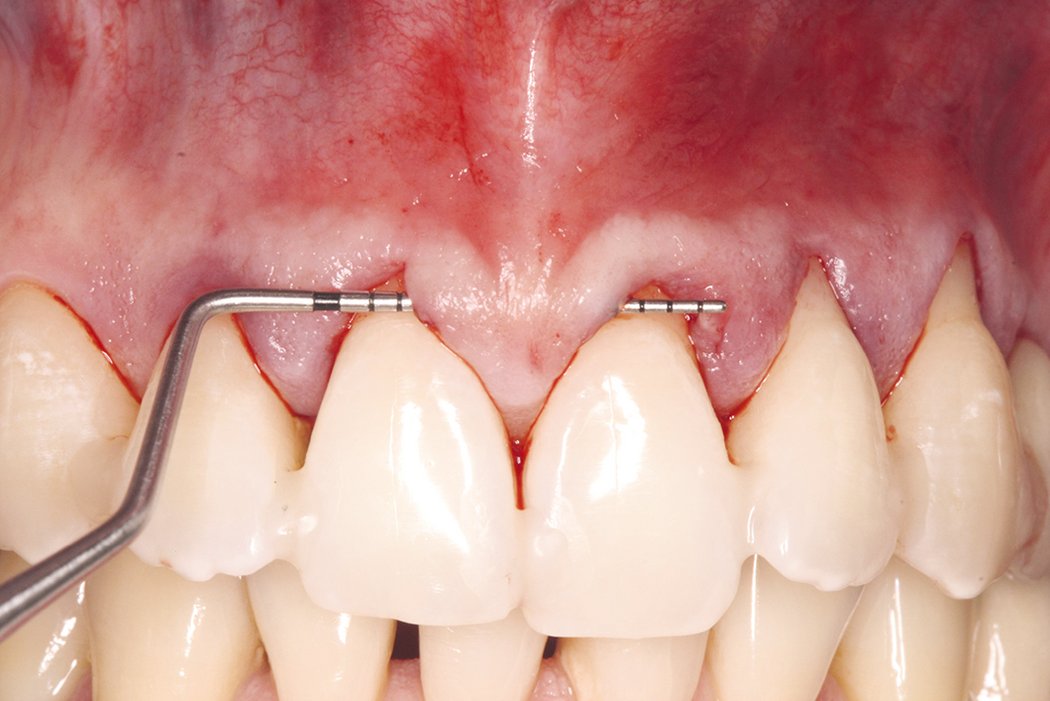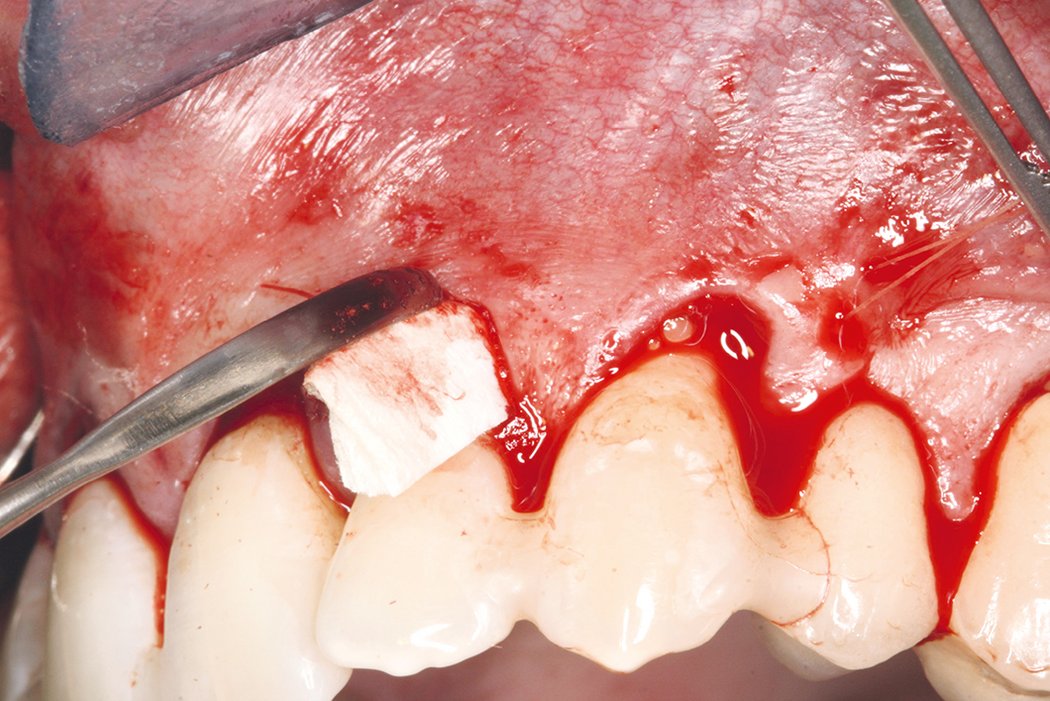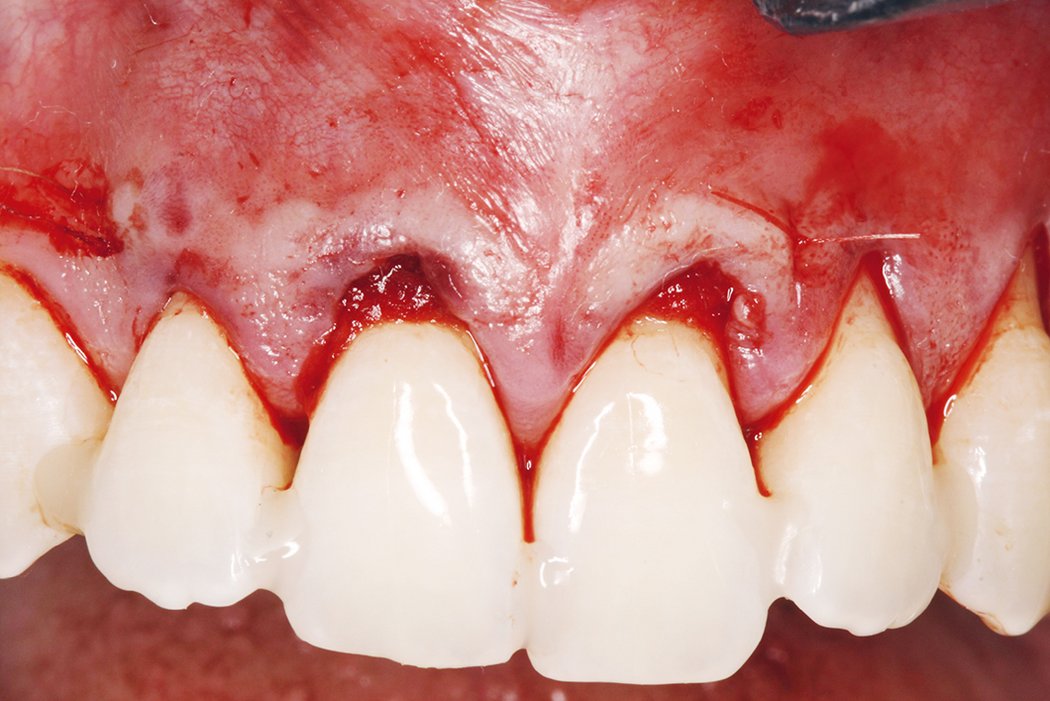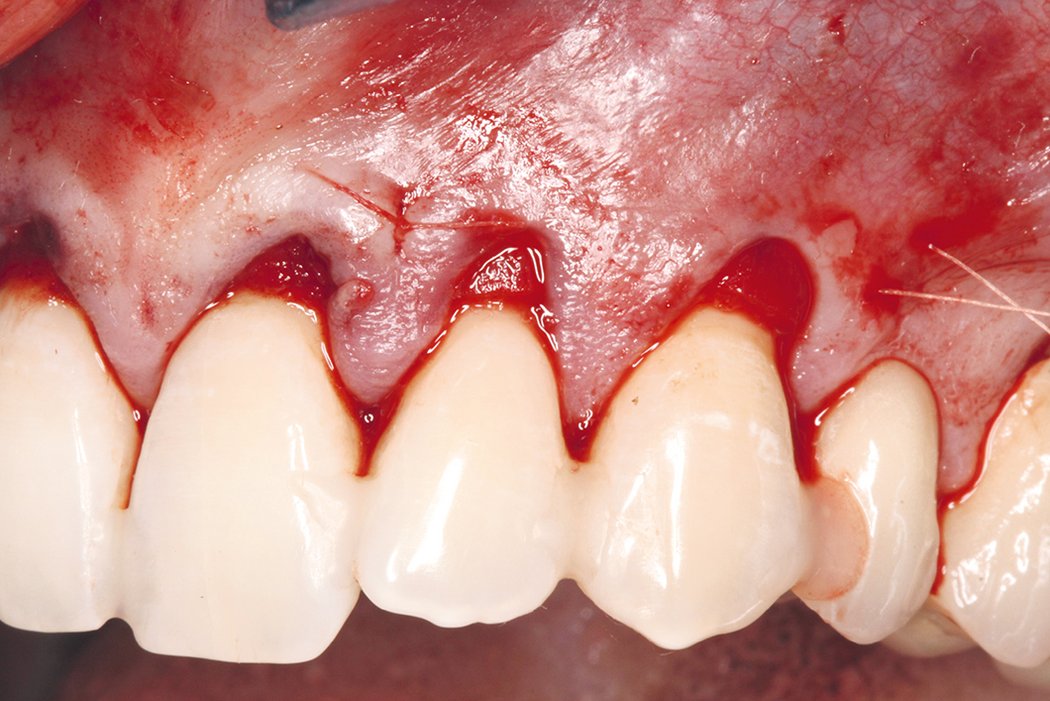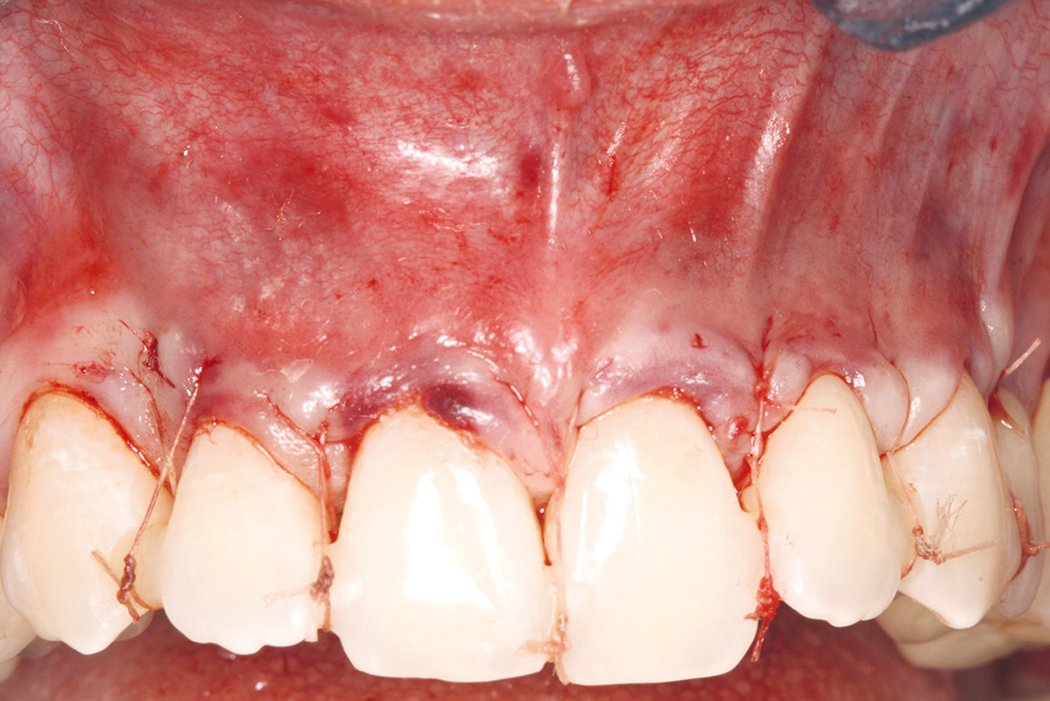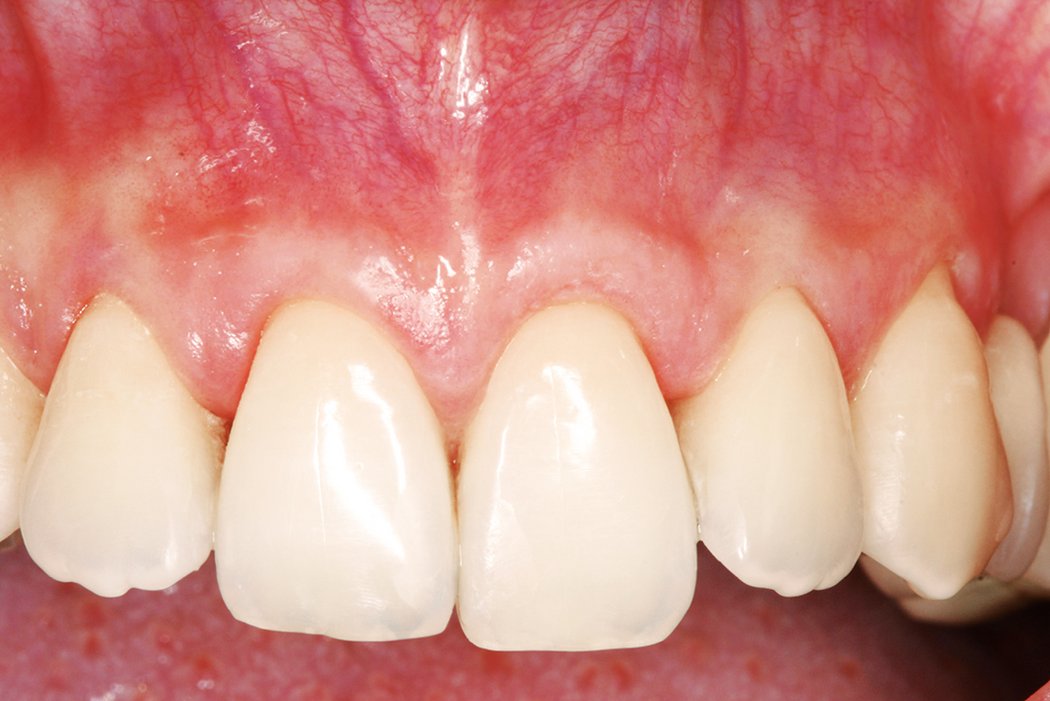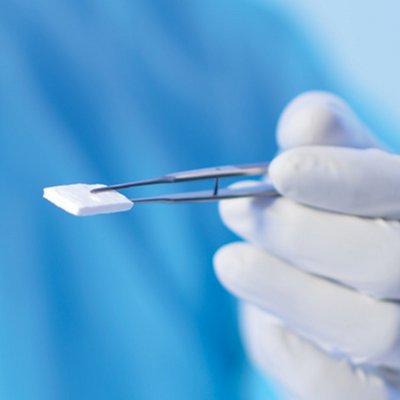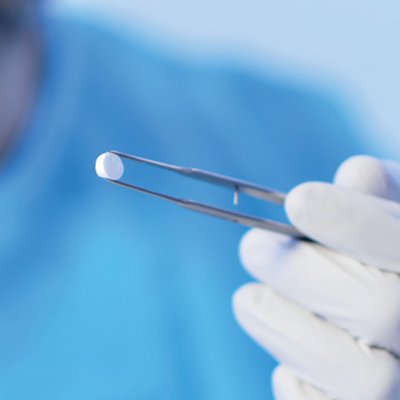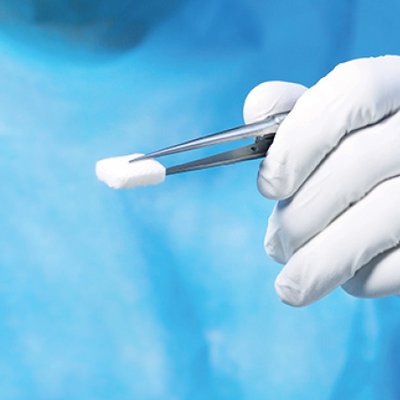Recession coverage
Gingival recession is extremely common and can lead to complications such as root caries, compromised aesthetic appearance, reduced oral hygiene and root surface hypersensitivity.1,2
Autogenous soft tissue grafts, such as free gingival grafts or connective tissue grafts, have proven successful in covering recession defects.1 However, harvesting those grafts, usually from the palate, is painful, technically demanding, time consuming and may lead to complications such as bleeding, pain, swelling, and occasionally also numbness or infections.3-6
Geistlich Fibro-Gide® or Geistlich Mucograft® combined with a coronally advanced flap or in minimal invasive techniques represent a viable alternative to recession coverage with an autologous graft.7,8,14,15. As their use spares creating a second surgical site, collagen matrices such as Geistlich Mucograft® or Geistlich Fibro-Gide® are associated with less chair time, patient pain perception and lower patient morbidity when compared to autogenous grafts.10-13
References:
- Chambrone L, et al.: Cochrane Database Syst Rev (2): CD007161. (systematic review)
- Bignozzi I, et al.: J Periodontal Res. 2014; 49(2): 143-63. (review)
- Griffin TJ, et al.: J Periodontol 2006; 77: 2070-79. (clinical study)
- Soileau KM, et al.: J Periodontol 2006; 77: 1267-73. (clinical study)
- Zucchelli G, et al.: J Clin Periodontol 2010; 37: 728-38. (clinical study)
- Cairo F, et al.: J Clin Periodontol 2012; 39: 760-68. (clinical study)
- McGuire MK & Scheyer ET: J Periodontol 2016; 87(3): 221-7. (clinical study)
- Cardaropoli D, et al.: J Periodontol 2012; 83(3): 321-28. (clinical study)
- Griffin TJ, et al.: J Periodontol 2006; 77: 2070-79. (clinical study)
- Sanz M, et al.: J Clin Periodontol 2009; 36(10): 868-76. (clinical study)
- Geistlich Mucograft® Seal Advisory Board Meeting Report, 2013. Data on file, Geistlich Pharma AG, Wolhusen, Switzerland
- Lorenzo R, et al.: Clin Oral Impl Res 2012; 23(3): 316-24. (clinical study)
- Thoma OS, et al. J Clin Periodontol 2016; 43(10): 874-85. (clinical study)
- Schultze-Späte, U and Lee CT. Int J Periodontics Restorative Dent. 2019 Sep/Oct;39(5):e181-e187. (clinical study)
- Stefanini M, et al. Clin Oral Investig. 2020 May 2. doi: 0.1007/s00784-019-03192-5. [Epub ahead of print] (clinical study)
Clinical Cases
Recession Coverage Treatment (Multiple)
Aim / Approach
Complete root coverage of multiple recession defect and dentin hypersensitivity reduction.
Conclusion
Complete root coverage was achieved with Geistlich Fibro-Gide® for multiple recession defect and dentin hypersensitivity problem was completely solved.
Recession Coverage Treatment
“Using Geistlich Fibro-Gide® in combination with a minimal-invasive technique for root coverage results in an excellent clinical outcome and high patient satisfaction.”
Aim / Approach
Root coverage of multiple recession defects (thin gingival biotype, Miller Class I).
Conclusion
A minimal-invasive tunnel approach in combination with the volume-stable Geistlich Fibro-Gide® resulted in complete root coverage.
Recession Coverage
Aim / Approach
Root coverage and increase in buccal soft tissue thickness.
Conclusion
Aesthetic root coverage with CAF and Geistlich Mucograft® might be an alternative option to connective tissue graft and CAF. An increase of keratinised tissue and gingival thickness was observed during the healing of the treated site. In this case, 100% of root coverage and an excellent aesthetic outcome were achieved.
Recession Coverage
Aim / Approach
Root coverage combining Geistlich Mucograft® with coronally advanced flap (CAF) without the morbidity of soft tissue graft harvest.
Conclusion
Recession coverage with Geistlich Mucograft® and CAF provides an acceptable option to connective tissue graft and CAF. A notable creeping attachment of the gingiva is observed in this case with Geistlich Mucograft® during the healing of the surgical site and optimal outcomes after 6 months appear to have further improved at 1 year follow-up.
Recession Coverage
Aim / Approach
Root coverage combining Geistlich Mucograft® with laterally moved, coronally advanced flap.
Conclusion
The laterally moved, coronally advanced surgical technique was combined successfully with Geistlich Mucograft® to treat an isolated gingival recession. Gain in gingival thickness and keratinised tissue could be observed. A nice blending of colour and thickness of the surgically treated area with respect to adjacent soft tissues was seen.
